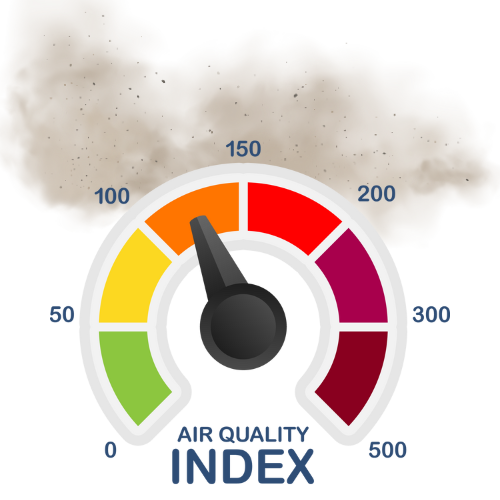Smoke-Ready Communities:
Creating and sustaining air quality information using targeted communication interventions to improve human and animal health
The Smoke-Ready Communities Pilot Project in Fort Collins aimed to enhance the dissemination of air quality information to the public. This initiative focused on improving communication practices to better inform at-risk communities during heightened wildfire smoke events. Through targeted messages and reliable sources, the project educated residents on safeguarding their well-being and that of their animals.
The research team conducted qualitative, survey-based fieldwork during Colorado’s largest wildfires and the COVID-19 pandemic. Their goal was to understand people’s perceptions of air quality, identify barriers to health-protective actions during air quality events, determine information needs and preferences, and pinpoint trusted communication channels that drive health-protective actions.
Smoke-Ready Communities considered various air quality concerns and compared them to other climate risks, evaluating human, animal, and environmental health perspectives.
Who was the Research Team?
Journalism and Media Communications
Katie Abrams
Ashley Anderson
Marilee Long
Environmental and Radiological Health Sciences
Sheryl Magzamen
Atmospheric Sciences
Emily Fischer
Bonnie Ford
Jeff Pierce
Microbiology, Immunology, & Pathology
Colleen Duncan
What did they do?
The Smoke-Ready Communities research team conducted qualitative fieldwork surveys in Fort Collins, assessing actions taken by individuals to safeguard their health and their animals’ well-being during heat, poor air quality, or visible smoke incidents at various intervals in Colorado.
The study covered specific demographics:
- Individuals aged 55+
- At-risk populations, such as outdoor workers and residents of manufactured homes
- Companion animal owners
- Adult caretakers
- Outdoor exercise enthusiasts
The surveys focused on understanding:
- Perceptions regarding overall risks associated with poor air quality
- The effectiveness of actions taken in response to potential risks
- Levels of air quality awareness
- Use of the Air Quality Index
What did they find?

- As immediate indicators of wildfire smoke events, like physical cues and emergency response communication, fade away, fundamental factors influencing air quality comprehension serve as the foundation for decision-making.
- Susceptible populations, particularly outdoor workers, often rely on immediate cues, such as visible smoke, to prompt action.
- Identifiable groups, such as pet owners or frequent outdoor exercisers, present key opportunities for targeted communication and activation of proactive measures.
Success as a Result of Pilot Efforts
$1 million: EPA Star Grant: Development of regional air quality communication campaigns based on survey findings



